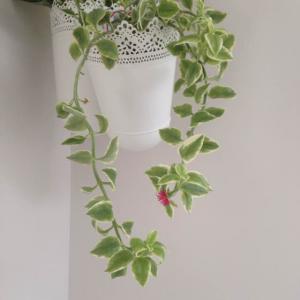文章
Dummer. ゛☀
2017年07月01日

Another name for blue daisy
The other name for "Blue Daisy" is African marigold, African Daisy and large flowered blue daisy.
Growth habit of blue eye Chrysanthemum
Blue eye chrysanthemum, originating from South Africa, like sunny and cool climate, avoid hot and cold. In the cultivation of the soil requirements are lax, good drainage can be.
When the reproduction of blue eye chrysanthemum, generally choose the spring sowing method, can also in autumn.
The plant is medium, with beautiful flowers. Blue eye chrysanthemum flowers solitary, open flower, blue and purple flower is.
Morphological character
The plant height of blue daisy is below 60cm. Basal Ye Congsheng, cauline leaves alternate, oblong to obovate, usually pinnately lobed, entire or slightly serrate, with white hairs when young leaves. Flower diameter of 7.5 cm or so, ligulate flower white, apex acuminate, abaxially pale purple to purple disc. There are single, double points. Flowering, summer and autumn.
Often confused with South African marigold flowers, the leaves of the 1 and Echinacea leaves are usually pinnately divided, whereas South African marigold flowers (blue eyes) do not normally split. 2 flowers, blue eye chrysanthemum flower, the flower, only the blue (blue eyes), South African marigold blue, yellow and purple, generally speaking, in the blue eyes of chrysanthemum, kind of cold tolerance will be dark blue in the central part (flower; edge, blue eye chrysanthemum only flower) a white, South African marigold (blue eyes) with purple, pink and white, yellow and other colors.
Propagation by sowing or cutting. autumn .
The ground should be planted with plenty of sunshine; the pot is made of loam and rotten leaves, and some sand is added to it. Blue eye chrysanthemum can be used for flower border, or flowers, water for long periods of time.
The flower language of the blue daisy
The language of the blue daisy is silent.



The other name for "Blue Daisy" is African marigold, African Daisy and large flowered blue daisy.
Growth habit of blue eye Chrysanthemum
Blue eye chrysanthemum, originating from South Africa, like sunny and cool climate, avoid hot and cold. In the cultivation of the soil requirements are lax, good drainage can be.
When the reproduction of blue eye chrysanthemum, generally choose the spring sowing method, can also in autumn.
The plant is medium, with beautiful flowers. Blue eye chrysanthemum flowers solitary, open flower, blue and purple flower is.
Morphological character
The plant height of blue daisy is below 60cm. Basal Ye Congsheng, cauline leaves alternate, oblong to obovate, usually pinnately lobed, entire or slightly serrate, with white hairs when young leaves. Flower diameter of 7.5 cm or so, ligulate flower white, apex acuminate, abaxially pale purple to purple disc. There are single, double points. Flowering, summer and autumn.
Often confused with South African marigold flowers, the leaves of the 1 and Echinacea leaves are usually pinnately divided, whereas South African marigold flowers (blue eyes) do not normally split. 2 flowers, blue eye chrysanthemum flower, the flower, only the blue (blue eyes), South African marigold blue, yellow and purple, generally speaking, in the blue eyes of chrysanthemum, kind of cold tolerance will be dark blue in the central part (flower; edge, blue eye chrysanthemum only flower) a white, South African marigold (blue eyes) with purple, pink and white, yellow and other colors.
Propagation by sowing or cutting. autumn .
The ground should be planted with plenty of sunshine; the pot is made of loam and rotten leaves, and some sand is added to it. Blue eye chrysanthemum can be used for flower border, or flowers, water for long periods of time.
The flower language of the blue daisy
The language of the blue daisy is silent.



0
0
文章
Dummer. ゛☀
2017年06月30日

Another name for snake Daisy
Janome chrysanthemum, also called Coreopsis, chrysanthemum, chrysanthemum peacock money.
Growth habit of Echinacea
Echinacea prefers light to light, and grows better in cool climates. It has a strong ability to resist cold. On soil demand is not high, the general soil can, with a little more barren, but too fertile soil to plant growth.
The garden function of snake Daisy
Snake ornamental chrysanthemum is high, so its main role is the original role, as a ground cover plants for cultivation, will have better results, but also suitable for cut flowers to watch.
Morphological character
The base is smooth, the upper part is more branched, and the plant height is 60 80cm. Leaves opposite, basal leaves 2, 3, pinnately parted, lobes lanceolate, upper leaves petiolate, wingless, basal leaves long stalked. The head is born on the top of slender branches, has a total peduncle, a constant inflorescence composed of cymose flowers, inflorescence straight 2~4cm. Flower petals 6~8 single round, gold, yellow, base or in the lower part of red brown, purple brown. Involucral bracts 2 layers, the inner layer is longer than. Achene spindle shaped, 1000 grain weight 0. 259, seed life 3~4 years. Flowering 6~8 months.
Often mistaken for Coreopsis basalis (scientific name: Coreopsis tinctoria), the major difference is that white golden chrysanthemum petals (ray florets) base of the 1/3 as a purple leaf two pinnately lobed, snake eyes (flower) all yellow chrysanthemum petals, leaf undivided.
The true face of a snake
The true face of the snake Daisy (6 pieces)
Hi sunny, cold and strong resistance to drought, barren, not choose soil, fertile soil to excessive growth. It grows better in cool season.


Janome chrysanthemum, also called Coreopsis, chrysanthemum, chrysanthemum peacock money.
Growth habit of Echinacea
Echinacea prefers light to light, and grows better in cool climates. It has a strong ability to resist cold. On soil demand is not high, the general soil can, with a little more barren, but too fertile soil to plant growth.
The garden function of snake Daisy
Snake ornamental chrysanthemum is high, so its main role is the original role, as a ground cover plants for cultivation, will have better results, but also suitable for cut flowers to watch.
Morphological character
The base is smooth, the upper part is more branched, and the plant height is 60 80cm. Leaves opposite, basal leaves 2, 3, pinnately parted, lobes lanceolate, upper leaves petiolate, wingless, basal leaves long stalked. The head is born on the top of slender branches, has a total peduncle, a constant inflorescence composed of cymose flowers, inflorescence straight 2~4cm. Flower petals 6~8 single round, gold, yellow, base or in the lower part of red brown, purple brown. Involucral bracts 2 layers, the inner layer is longer than. Achene spindle shaped, 1000 grain weight 0. 259, seed life 3~4 years. Flowering 6~8 months.
Often mistaken for Coreopsis basalis (scientific name: Coreopsis tinctoria), the major difference is that white golden chrysanthemum petals (ray florets) base of the 1/3 as a purple leaf two pinnately lobed, snake eyes (flower) all yellow chrysanthemum petals, leaf undivided.
The true face of a snake
The true face of the snake Daisy (6 pieces)
Hi sunny, cold and strong resistance to drought, barren, not choose soil, fertile soil to excessive growth. It grows better in cool season.


0
0
Timea Brenner
2016年07月29日

I new added a "Livingstone Daisy" in my "garden"


5
0
lrgarden:love this flower












